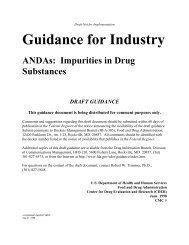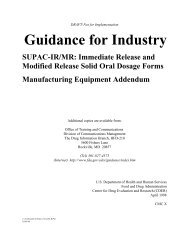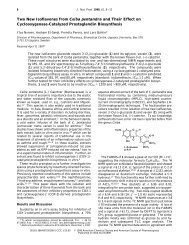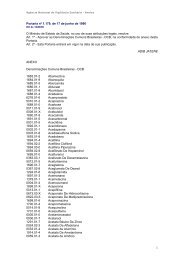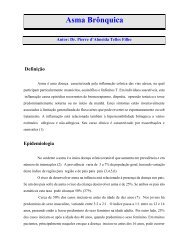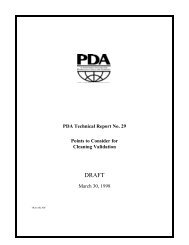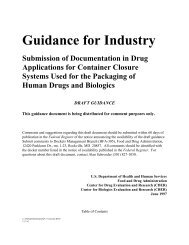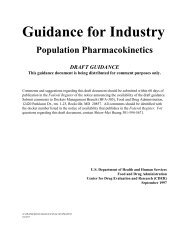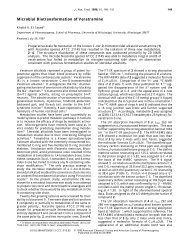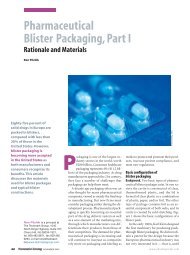Bioanalytical Methods Validation for Human Studies - Pharmanet
Bioanalytical Methods Validation for Human Studies - Pharmanet
Bioanalytical Methods Validation for Human Studies - Pharmanet
Create successful ePaper yourself
Turn your PDF publications into a flip-book with our unique Google optimized e-Paper software.
Draft — Not <strong>for</strong> Implementation<br />
<strong>for</strong> the development of SOPs <strong>for</strong> evaluation of an analyte’s stability in a biological<br />
matrix (Timm 1985). Whatever approach is used, the SOPs should clearly<br />
describe the statistical method and rules employed. Additional validation may<br />
include investigation of samples from dosed subjects.<br />
F. Acceptance Criteria<br />
An analytical method is considered fully validated when it meets the following criteria:<br />
Precision: The between-batch CVs <strong>for</strong> low, medium, and high concentrations should be<br />
#15%, and #20% <strong>for</strong> the LOQ QC, using a minimum of three batches.<br />
Accuracy: The between-batch mean value should be within ±15% of the nominal value at<br />
low, medium, and high QC concentrations and should not deviate by more than ±20% at<br />
the LOQ.<br />
Sensitivity: The lowest standard should be accepted as the limit of quantitation of the<br />
method if the between-batch CV at the LOQ QC is #20%.<br />
Specificity: The responses of interfering peaks at the retention time of the analyte should<br />
be less than 20% of the response of an LOQ standard. Responses of interfering peaks at<br />
the retention time of the internal standard should be #5% of the response of the<br />
concentration of the internal standard to be used in studies.<br />
Stability: Long-term, short-term, freeze and thaw, stock solution, and autosampler<br />
stability data should meet the criteria specified in the SOP.<br />
V. IN-STUDY VALIDATION<br />
Assays of all samples of an analyte in a biological matrix should be completed within the time<br />
period <strong>for</strong> which stability data are available. In general, analysis of biological samples can be done<br />
with a single determination without duplicate or replicate analysis if the assay method has<br />
acceptable variability as defined by validation data. This is true <strong>for</strong> procedures where precision<br />
and accuracy variabilities routinely fall within acceptable tolerance limits. For a difficult<br />
procedure with a labile analyte, where high precision and accuracy specifications may be difficult<br />
to achieve, duplicate or even triplicate analyses may be recommended <strong>for</strong> better estimate of<br />
analyte.<br />
j:\!guidance\2578dft.wpd<br />
12/14/98 9



